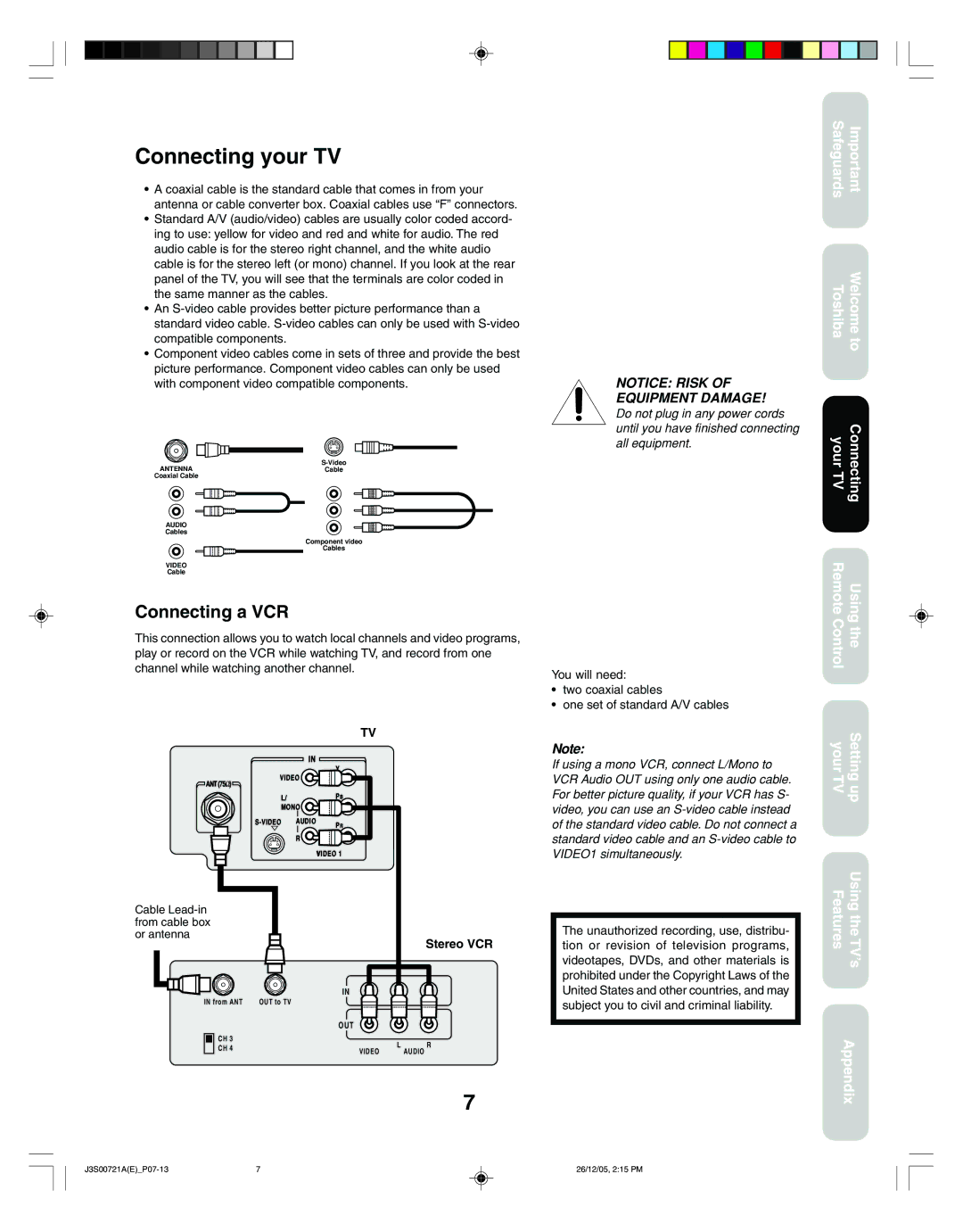
Connecting your TV
•A coaxial cable is the standard cable that comes in from your antenna or cable converter box. Coaxial cables use “F” connectors.
•Standard A/V (audio/video) cables are usually color coded accord- ing to use: yellow for video and red and white for audio. The red audio cable is for the stereo right channel, and the white audio cable is for the stereo left (or mono) channel. If you look at the rear panel of the TV, you will see that the terminals are color coded in the same manner as the cables.
•An
•Component video cables come in sets of three and provide the best picture performance. Component video cables can only be used with component video compatible components.
ANTENNACable
Coaxial Cable
AUDIO
Cables
Component video
Cables
VIDEO
Cable
Connecting a VCR
This connection allows you to watch local channels and video programs, play or record on the VCR while watching TV, and record from one channel while watching another channel.
TV
NOTICE: RISK OF
EQUIPMENT DAMAGE!
Do not plug in any power cords until you have finished connecting all equipment.
You will need:
•two coaxial cables
•one set of standard A/V cables
Note:
Safeguards
Toshiba
your TV
Remote Control
Important
Welcome to
Connecting
Using the
IN
Y
VIDEO
ANT(75Ω)
L/ |
| PB |
MONO |
| |
AUDIO | PR | |
|
| |
R
VIDEO 1
Cable
IN
IN from ANT | OUT to TV |
OUT
Stereo VCR
If using a mono VCR, connect L/Mono to VCR Audio OUT using only one audio cable. For better picture quality, if your VCR has S- video, you can use an
The unauthorized recording, use, distribu- tion or revision of television programs, videotapes, DVDs, and other materials is prohibited under the Copyright Laws of the United States and other countries, and may subject you to civil and criminal liability.
your TV
Features
Setting up
Using the TV’s
CH 3 | L | R | |
CH 4 | |||
VIDEO | AUDIO | ||
|
7
Appendix
7 | 26/12/05, 2:15 PM |
